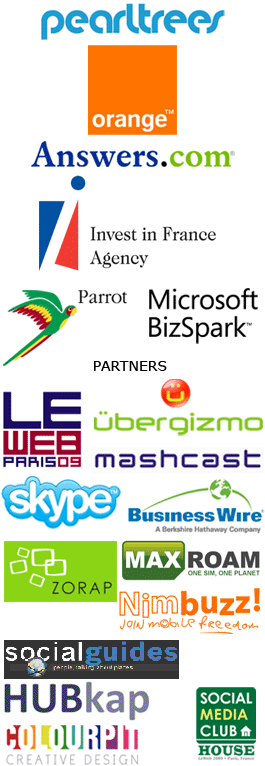Pearltrees: A Unique Way to Discover & Organize on the Web
by Renee Blodgett on December 7, 2009 at 1:51 am
Pearltrees CEO Patrice Lamothe meets us at the door of their offices on rue de charonne in a funky, artsy area of Paris that houses other early stage companies and ad agencies, not unlike San Francisco’s SOMA in many ways.
Coffee waiting? You betcha and hot chocolate too.
He’s not an unknown personality in Silicon Valley so some of us had heard of, tried, tested and demoed Pearltrees before. He knows this so he gets a little creative and we dig a little deeper into their service.
“Building an organization on the web touches on how you organize your stuff in the real world. If you like books, you will likely get a lot of pleasure organizing books into your own library on the web,” says Patrice.
Pause….a nearby church bell rings on the half hour. (Okay, so not quite like SOMA)……
Pearltrees allows you to get in touch with others who share mutual interests around the way you ‘organize yourself on the web.’ “Bookmarking and tagging alone doesn’t allow you to accomplish this,” says Patrice.
Visually it looks a bit like the brain……not unlike a mind map, but that’s not the point of the app, which is all done in flex btw. You can import files from delicious and export as RDF.
Coming out this week, any URL that you tweet will automatically turn into a pearl inside Pearltrees. Pearltrees in a sense becomes your ‘memory,’ allowing you to store useful data by category or by interest — all organized in your Pearl-Tree. (visually displayed the way you think and want to store and view data).
Who uses it? In France, a lot of art and political bloggers use it as a way to visually tell a story or drive people to the web around a particular topic or interest.
One third of their users are early adopter users who are social media savvy and one third are under thirty and mostly women from France and the U.S.
You can embed your pearls on Twitter, email Facebook or directly inside your own blog.
To-date, they have raised roughly $3 million. As for their revenue model? “Either through premium services or advertising,” says Patrice. Their cost per user is very very low however.


